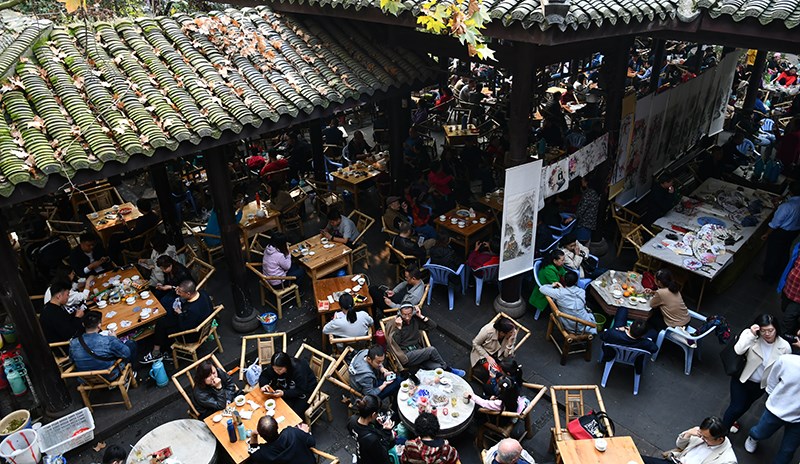As an important place of production for orchids, Sichuan Province is one of the provinces with the most orchid species in China and is rich in wild orchid. More than 100 years ago, British botanist Henry Wilson was commissioned by the Royal Gardens of England and Harvard University in the United States to travel to Sichuan, China. He made in-depth inspections in Four Girls Mountains (Siguniang Shan), Huanglong, Gongga Mountain and other places to collect plant specimens, and to inspect wild plant resources. And then hundreds of wild flower species that were collected in this area were introduced to western countries, such as Meconopsis Integrifolia, Lilium Regale Wilson, Yellow Lady-Slipper (Cypripedium flavum).
Orchids in Sichuan are mainly distributed in four areas, namely, the Lingyuan area in west Sichuan, the Lingnan (south slope of Qinling) area, the Yibin-Fengjie area, and parallel ridge and valley area in east Sichuan. Among them, the Lingyuan area is a ridge zone where the Qinghai-Tibet Plateau transitions to the Sichuan Basin, namely from the edge of the basin with 600 meters above sea level to the Gongga Mountain with more than 7,800 meters above sea level. Therefore, the terrain is peculiar and varied, and the vertical change of vegetation is large, and multiple climate types are existing here. Cymbidium plants are horizontally and vertically zonal distribution and are found on snow lines with the altitude of 700 meters to more than 4,000 meters where orchid species are also most abundant. Some alpine primeval forest areas also maintain the original vegetation zone of Cymbidium plants. The diverse geographical environment and climate have formed the uniqueness of orchids’ evolution and variation.
On this trip, we will head to several famous alpine orchid production areas in Sichuan to find rare orchid species: Kangding-Hailuogou (Gongga Mountain), Four Girls Montains-Balang Mountain-Wolong, Huanglong-Jiuzhaigou and Wanglang.
Located in the southeast of Ganzi Tibetan Autonomous Prefecture, Sichuan Province, and on the eastern slope of Gongga Mountain (Minya Konka), Hailuogou is a very high mountain area on the eastern edge of the Qinghai-Tibet Plateau. There are large vertical altitude difference and special climate type. Its vertical differentiation of vegetation types is a band combination of different spaces. Starting from the valley entrance, it gradually changes from a sparse thicket zone in the valley to evergreen broad-leaf forest zone and mixed forest zones of evergreen broad-leaf forest and deciduous broad-leaf forest, sub-alpine coniferous and broad-leaved mixed forest zone, coniferous forest zone, and alpine shrub meadow zone. We can look for Cypripedium Wardi, Cypripedium lichiangense, Calanthe tricarinata in Kangding-Hailuogou area.
Located between Wolong Nature Reserve and Siguniang Shan (Four Girls Mountain), and at the junction of the eastern Qinghai-Tibet Plateau and the Sichuan Basin, Balang Mountain boasts complex terrain and landform, including river valley, alpine meadow, alpine screes below the snow line and bare rock on the mountaintop. The unique altitude, topography, and climatic characteristics have endowed the Balang Mountain with abundant plant resources. From May to August each year, when the flower season comes, various and gorgeous flowers contend in fragance and fascination, and compete for blossom on the alpine meadows, rock crevices, and screes. We will look here for Oreorchis Patens, Cypripedium Tibeticum, Galearis Wardii, Cypripedium Palangshanense and Cypripedium Flavum. Introduced to the Arnold Arboretum successfully by Wilson, the Cypripedium Flavum is called "the proud Margaret" in the western gardening world because of its noble and elegant temperament. In European legend, they were transformed from shoes lost by the goddess Venus in the forest.
The Huanglong National Park has the rare and large scale alpine orchid group with 31 genera and 69 species of orchids. In the Huanglong Gully with just 3.6 kilometers long, there are 34 species of orchids of 19 genera, including Cypripedium Flavum, Calanthe discolor Lindl and other famous orchid flowers in the world, which also makes Huanglong Gully a veritable orchid paradise and one of the 25 biodiversity hot spots in the world. Every year in June, the Alpine Orchid Festival is held here. We will look for various orchids by the color ponds, such as Cypripedium Flavum, Cypripedium Palangshanense, Epipactis Mairei, Herminium Monorchis, Listera Grandiflora, Galanthe Alpina, Oreorchis Patens, Cypripedium Shanxiense, Platanthera Japonica, Galanthe Brevicornu, Cypripedium Sichuanense, Cypripedium Micranthum,Oreorchis Fargesii, Cypripedium debile Rchb. F, Cypripedium macranthum Sw, Spotted Lady's Slipper, Cypripedium henryi Rolfe.
Wanglang National Nature Reserve, located in Pingwu County, Mianyang, Sichuan Province, has a large variety of orchids. From more than 2,000 meters to nearly 5,000 meters above sea level, Wang Lang has well-preserved ecosystems such as forests, thickets, meadows and alpine wetlands, and is rich in water resources. It is not only an important habitat for giant pandas, but also provides a super excellent condition for orchids. Many experts from all over the world come here to look for orchids, and also find many precious and highly ornamental alpine orchids, such as Cypripedium Palangshanense, Cypripedium Tibeticum, Cypripedium farreri W. W. Smith, Risleya atropurpurea King et Pantl, Listera grandiflora Rolfe, Neottia acuminata Schltr, Spotted Lady's Slipper.
In addition to orchids, we will also enjoy more rhododendrons in the mountains and the charming Meconopsis Integrifolia, Meconops Balangensis, Meconopsis Punicea, Meconopsis Quintuplinervia Regel, Omphalogramma Vincaeflora, Primula Poissonii, Primula Kialensis, Isis Bulleyana, Clematis Mantana, Ajuga Lupulin, Rhodiola Fastigiata, Sinopodophyllum Hexandrum, Aster Brevis, Leontopodium Alpinum and even many alpine plant flower. Besides, you can enjoy the beautiful landscapes on Gongga Mountain (Minya Konka), Four Girls Mountain (Siguniang Shan), and in many famous national forest park attractions like Jiuzhaigou and Huanglong, and on highlands in western Sichuan.












